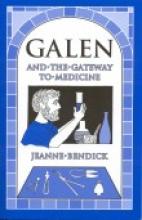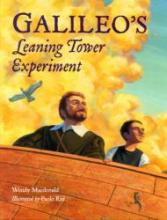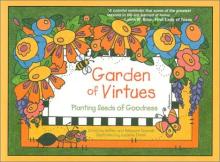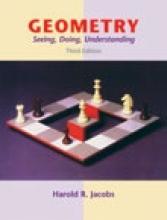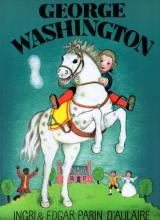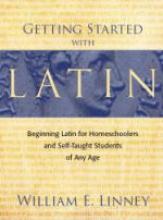No name
Galen and the Gateway to Medicine
Galen was born in 129 A.D. in present day Turkey (at that time part of the Roman Empire). When he studied medicine, medical training was very haphazard, but in his lifetime he revolutionized the idea of what a doctor should be, both by his example as a renowned doctor and his extensive writings on anatomy and pharmacology (some of which are still in existence today). His experience in treating patients from wounded gladiators to the wealthy of Rome to Roman emperors, extensive study of medicinal plants, dissection of animals, etc. led to his remarkable success as a doctor and the respect with which his writings were treated.
The medical aspects of the book largely focus on the quest to understand the purpose of each of the organs and the workings of the circulatory system. The author also provides us with a final chapter which summarizes the medical advancements after Galen that led to our current understanding of how the body works. Like Archimedes and the Door of Science, this story will be best understood by ages ten and up and takes a certain amount of concentration to follow the story and absorb its content well. However, the rewards are great in acquiring a deeper understanding of Roman culture, medicine, and the respect for life that has been passed down from the Hippocratic tradition.
Galileo's Leaning Tower Experiment
Science readers are to be found if you look around enough as this book demonstrates. It is the fictional story of Massimo, a boy who regularly throws his uncle's lunch off a bridge to his boat as his uncle rows by below. Galileo happens to see that the bread and the cheese land at the same time. The story ends atop the leaning Tower of Pisa, as legend suggests Galileo did.
The illustrations are a little disappointing, the people in particular. The story is sometimes forced as math and science readers often are; however, overall it is a great tale that teaches a basic principle of physics sure to have your children dropping objects from heights. It even alludes to Galileo's ramp experiments on acceleration. The last page briefly fills in the reader on the period in history, what in the story is fact and fiction, and the formula for calculating speed.
Overall this is a great introductory physics science book.
Galileo's Leaning Tower Experiment
Additional review: World Geography, World History, science... and some creative fictional characters as well! All in a beautiful information Picture Book.
The story of the legendary Leaning Tower of Pisa experiment by Galileo is brought to life here around the story of a boy, Massimo, who was very clever, and dropped his father's lunch from a bridge everyday in calculating motions... until a passer-by professor named Galileo witnesses it and rethinks the whole Aristotelian notion on the subject!
The pictures are colorful, warm and very pleasant, and some of the angles are taken from delightful perspectives!
A gem. A very nice way to introduce children to Galileo and to some concepts of Physics.
See our other review of Galileo's Leaning Tower Experiment here.
Garden of Virtues
This is a friendly and lovely little book on practicing the virtues in the midst of family life. Although it is clear that at least one of the authors is Catholic, the book is written on a very practical level and in such a way that it would be appealing to any family attempting to live a peaceful and virtuous life (particularly in the midst of raising children).
The book is intended to be used by the family as a whole, perhaps sharing a new chapter at the dinner table each week. Each chapter (three to four pages long) covers one virtue. A simple definition of the virtue is given, along with ideas for fostering the virtue, avoiding its opposite and a good, related family rule to apply. The chapters include simple ideas and stories which illustrate the importance of the virtue and its true meaning. There are fifty-two virtues in all - one for each week of the year. Virtues covered range from Audacity (they even quote St. Thomas Aquinas in defense of considering audacity a virtue - very impressive!) to Wisdom and other important virtues (listed alphabetically) in between.
The book is very charming, with full-color garden-themed illustrations on every page (in a style reminiscent of Mary Engelbreit). This is a nice supplement to the more theology-oriented studies of virtue to remind children (and their parents) about the basics of living a moral life.
Genesis 1: House of the Covenant
8.75x12" heavy paper, suitable for pencils, markers, or crayons
Nihil Obstat
Geography Songs
Geometry: Seeing, Doing, Understanding
Saxon is a tried and true mathematics choice for many homeschoolers, but one complaint about the high school level texts Algebra I and Algebra II is that geometry is included piecemeal in the algebra courses rather than being taught separately in a systematic fashion. Jacobs' Geometry is one alternative for those who find this to be a problem. It is a friendly, thorough approach to high school geometry that starts with an introduction to deductive reasoning and takes the student through to non-Euclidean and coordinate geometry.
The format is very appealing, at least to my high-school age son and myself. The book is divided into chapters covering broad topics like Rays and Angles, Congruent Triangles, and Quadrilaterals. These are subdivided into lessons. Each lesson opens with a cartoon or thought puzzle which draws the student into the topic being discussed. There are three sets of problems in each lesson: the first one usually checks comprehension of concepts and knowledge of theorems, the second set is an application of the lesson to proofs, and the third set, usually a single question, presents a brain-teaser which allows the student to think and ponder creatively.
A Letter to the Student at the beginning tells the story of Pythagoras, the Greek geometer, who taught a reluctant student by paying him for each theorem he learned. By the end of the course, the student was paying Pythagoras. The anecdote sets the tone for the whole book, the assumption being that geometry is a noble, worthwhile endeavor and that a student will realize this and be willing to apply himself to mastery.
Though I haven't used the Jacobs' Algebra, the format looks similar to Geometry. My high-schooler is using it now in short sections as a review. With my next high schooler, I am planning to go from Saxon Algebra ½ to Jacobs' Algebra. There is no book in the Jacobs' series after Geometry; the author Harold Jacobs recommends Algebra II and Trigonometry by Paul A Foerster as the next step before Calculus.
George Washington
It is just like the D'Aulaire's to create a story (complete with beautiful full-color illustrations) that would be interesting and appealing to small children and yet teach more about the character and upbringing of "the Father of Our Country" than most textbooks. The story covers our First President's early childhood – growing up in Colonial America – his adventures (and character) as a young officer during the French and Indian War and, of course, his role in the American Revolution and as president.

